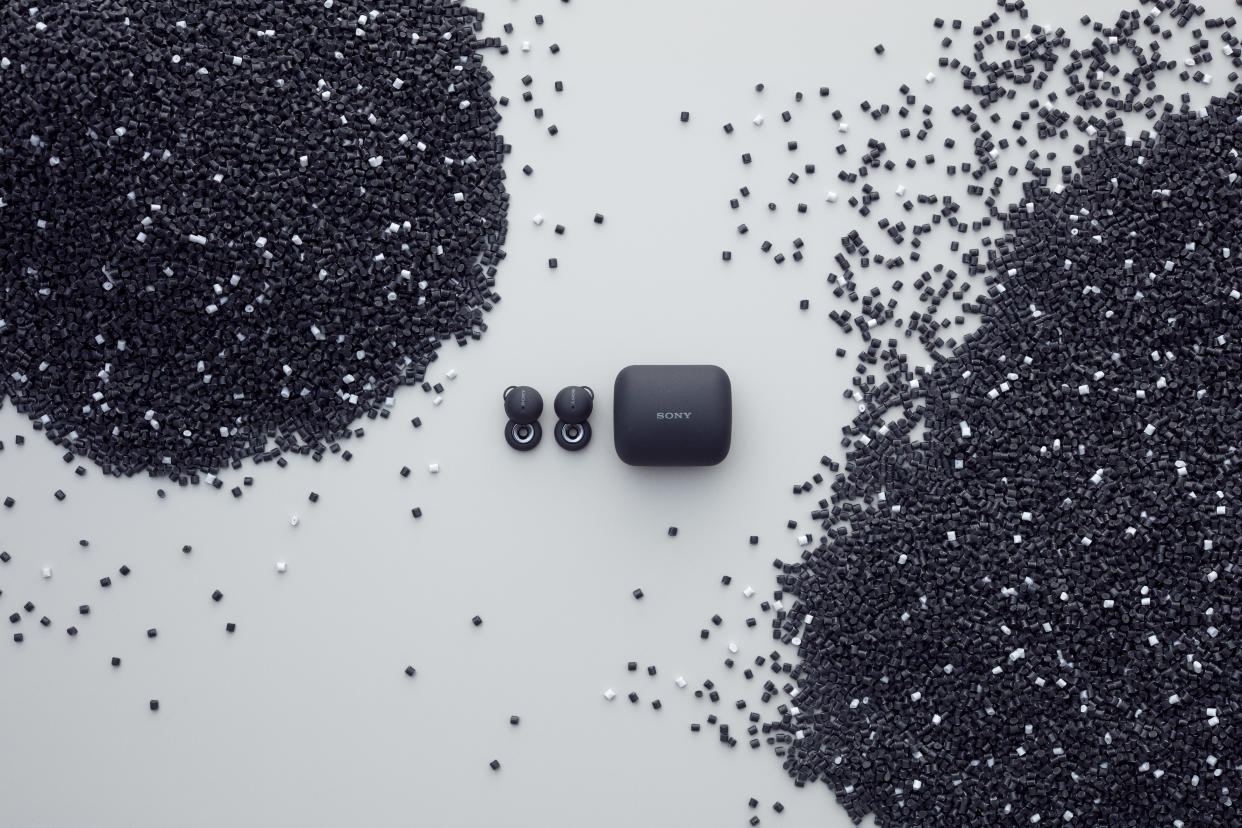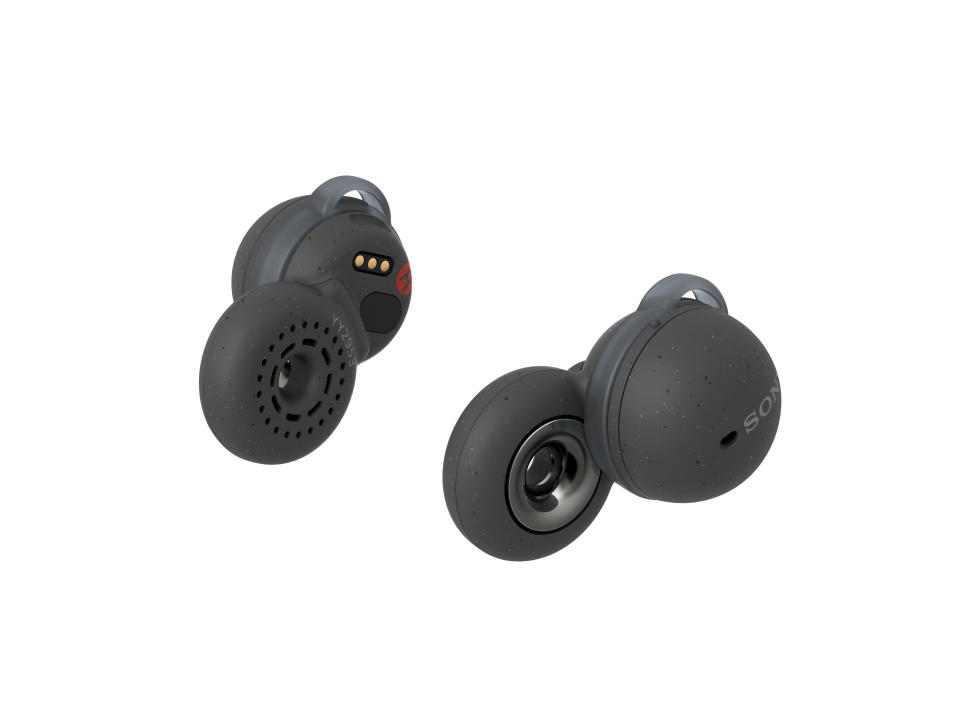RS Recommends: Sony LinkBuds’ Futuristic Design Hides What’s Under the Hood

If you purchase an independently reviewed product or service through a link on our website, Rolling Stone may receive an affiliate commission.
Everyone can’t stop talking about Sony‘s latest true wireless earbuds — and for good reason. We’ve reviewed earbuds before that took a big swing on innovative design, but none with a look quite like this.
More from Rolling Stone
RS Recommends: The Kindle Paperwhite Is $35 Off With Three Months of Free Reading
Maluma Casts His Mom As Model for Latest 'Royalty' Clothing Line Promo
When we unboxed the Sony LinkBuds, we were genuinely scratching our heads at how a discrete earbud that looked like someone hole-punched a donut could produce the massive soundstage Sony is known for. The design does serve a practical purpose (allowing a certain level of ambient awareness and allowing the music to immediately pause when you stop talking), but besides a built-in transparency mode, we had to ask, how rounded out could the sound possibly be?
While your fit may vary (and believe us when we say that fit will make or break these buds for you), once you nestle them in to that sweet spot, the result is a bright, balanced soundscape on par with the Apple’s third generation of AirPods. While they won’t give you nearly the same level of noise-isolation you’d find in Sony’s flagship WF-1000XM4 earbuds, they’re not exactly meant to. They’re the wireless earbuds for earbud-haters — let me explain.
Those with sensitive ears or who hate the deep suction of most true wireless buds will appreciate everything this experimental design brings to the table. Sony’s LinkBuds are anything but average, and with great signature sound quality, and a few key features, they prove that you can’t judge an earbud by its design.
Size (and Touch) Matters

Sony
Buy: Sony LinkBuds Wireless Earbuds $178.00
Even with a striking figure-eight design, the first question on our minds was: how comfortable are the Sony LinkBuds, exactly? The answer: it really depends on your ears. Sony knows they’ve taken a risk here not going in-ear, with the actual driver section of the earbud nestling in the upper part of your ear, and secured by a small, rubber earloop resting inside the inner curve of cartilage for extra stabilization. Sony even provides a helpful video in their Headphones app offers to give you a tutorial for how to put them in correctly.
Similar to providing different a variety of eartips, Sony gives you five sets of loops in varying sizes in the box. This is critical to both sound quality you’ll get out of the buds and the fit itself — we found that the LinkBuds won’t really stay in place unless the loop really settles under the cartilage fold in the middle of your ear. While I eventually found the fit that worked best for me, after an hour or two of listening, the ring driver’s hard plastic started to dig into my ear, and I found myself missing the inner eartip.
That being said, Sony’s LinkBuds are their smallest true wireless buds to date, weighing a dainty 4.1 G, which nearly half the size of the Sony WF-1000XM4s. One of the biggest benefits to their design isn’t actually the size, but how lightweight they feel, and my problems with fit may just be because of my own ear sensitivities. Other reviewers have found them more gentle and easier to wear for long listening periods than even, say, the Beats Fit Pro, which has a tight seal meant for working out.
Speaking of which, the LinkBuds are a bit underwhelming when it comes to their gym-readiness. They have an IPX4 rating, which means they should be able to withstand some water splashes, in theory. We tried wearing them while working out, but even a little bit of sweat, or rapid motion, loosened the earbuds. Even if they weren’t going to fall out, they certainly felt like they could. These are earbuds better suited for taking a walk, commuting, or just jamming out at your desk. The similarly-priced Jabra Elite 7 Active Pro earbuds sport an IP57 rating, and have a much more durable design suited for tough workouts.
In terms of controls, LinkBuds offer up something very different to what you might be used to. Admittedly, the LinkBuds’ “Wide Area Tap” is a very cool work-around for not having traditional earbud stems or tactile buttons. Instead, the earbuds rely on special sensors that allow you to perform touch controls by tapping the skin of your temple, right outside your ear. It works fairly well, and you can control playback, adjust volume, or use voice assistants (through double and triple taps only, though).
Sony says that the battery life on the LinkBuds can last up to five and a half hours of music playback, with the case providing an additional 12 hours of charge. That’s pretty standard, but without terribly high-powered ANC, it’s a little on the low side. The charging case has an LED light for battery status, and a button to manual pair the buds. It comes with a USB-C to USB charging cable that connects to a USB-C port.
The LinkBuds support Bluetooth 5.2, AAC and SBC Bluetooth codecs, but not AptX codec. Connectivity holds up fine, but the range is shorter than what we’d expect for buds in this price range (it cut out when I left the phone in my kitchen and walked down to the basement directly below it). It’s a shame there’s no multipoint pairing so you can switch between devices, but that’s not a dealbreaker for us, either.
Balance With a Hit of Bass, Hit-or-Miss Transparency

Sony
Buy: Sony LinkBuds Wireless Earbuds $178.00
The ring driver is bound to dominate most of the discussions about the LinkBuds, but Sony has a few audiophile tricks up their sleeve that are even more impressive than the design itself. The DAC and amplifier are housed in the domed section of the buds, and they use Sony’s award-winning Integrated V1 processor (the same you’ll find in the WF-1000XM4) to ensure your music sounds as authentic as possible with minimal distortion. They also utilize Sony’s DSEE (Digital Sound Enhancement Engine) tech to help crisp up and restore any high-frequency sounds in digital audio files that get lost to compression.
If you hate how stifling active noise-cancellation can feel when turned on, these are the buds for you — you won’t get that same level of isolation as you do from traditional in-ear earbuds. You’re always going to be at least a little aware of surroundings, which makes them really great buds for the office, or for when you’re on public transport and really need to pay attention to those announcements.
The LinkBuds’ Speak-to-Chat function also helps support this ‘in-the-moment’ functionality. The earbuds will automatically stop your music when you start talking, and resume it when you stop. Sensitivity can be adjusted in the app, so it won’t just turn off every time you cough or hum. It’s useful if you won’t want to fiddle with buttons for transparency modes, but my experience was hit or miss. There was often a delay between when I started talking and then the buds stopped the playback, and sometimes it wouldn’t turn my music off at all. But you can still pause your music the old fashion way — by taking out an earbud.
While lower frequencies on the LinkBuds will never sound as weighty and solid as they would without the tight seal of noise-isolating buds, what is impressive is how big they’ve managed to make the bass sound regardless. The grooving bass line on Lizzo’s About Damn Time packed a smooth punch without feeling distorted, although if you’re a true basshead, these may not cut it for you. But that’s fine, because Sony has really fine-tuned the balance here, and the soundscape is just incredible.

Sony
Buy: Sony LinkBuds Wireless Earbuds $178.00
The ring driver actually adds to the experience here, with its open design allowing for a spacious soundstage that’s more unique and more expansive than any in-ear designs. You retail the detail on every instrument in orchestra-heavy pieces, like with the string section on PREP’s Paul McCartney-esque Carrie. Mids and highs are bright and well-balanced, especially on tenor vocals like Bowie’s in Golden Years. There are nine different EQ presets on the companion app for iOS and Android, but tweaking the sound didn’t drastically change the profile and only upped the bass a little. How crisp compositions are going to sound will also depend on the level of ambient noise around you.
To help out your listening experience in times when outside noise can be overpowering (like while walking around a city), Sony added Adaptive Volume Control to the LinkBuds. This automatically adjusts the volume whenever the background noise increases, and lowers it when it decreases. This worked well enough for me to feel like I wasn’t missing out on ANC too much, and the amount of noise bleed was about as much as you’d get from early AirPods.
Call quality is also a huge win for the LinkBuds. With Sony’s Clear Call with AI, my voice always came through clear and present thanks to the built-in mics and outside noise-reduction system. The person on the other end of my line heard me through streets bustling with traffic and in a crowded food hall.
Final Verdict: Are the Sony LinkBuds Worth It?
If you’re someone who has problems with the way that conventional in-ear earbuds are designed, or are looking for some of the best earbuds for the office that’ll help you stay alert and tuned in, then the Sony LinkBuds will catch your eye and reel you in.
They’re certainly not perfect, especially when it comes getting the right fit. But in terms of overall sound quality, there’s a lot we like here, especially when it comes to the expansive soundstage you can achieve with the ringed design. The unique driver setup also puts out balanced sound, and fairly good bass for their size. The Speak-to-Chat function and volume adjustment also gives you a hands-free level of awareness you would normally need to mess around with buttons for.
Sony’s LinkBuds have the most potential we’ve seen out of any wireless earbuds in recent years, and we can’t wait to see how Sony pushes the design further and reengineers it for the next generation.
Buy: Sony LinkBuds Wireless Earbuds $178.00
Best of Rolling Stone

